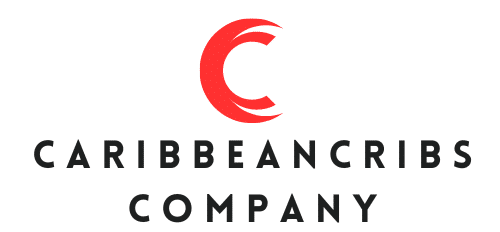How to Optimize the Transmission Shift Pattern for Economy in a Ford Focus EcoBoost?

The Ford Focus with its EcoBoost engine provides not only a smooth ride but also great fuel efficiency. However, you can still improve your mileage by optimizing the transmission shift pattern. This guide will specifically provide you with a roadmap to maximize your driving experience by ensuring your Ford Focus runs at its most efficient, saving you time and money on fuel.
Understanding the Ford Focus EcoBoost Transmission System
Before diving into the technicalities of optimizing the transmission shift pattern, you should first grasp how the Ford Focus EcoBoost’s transmission system works.
En parallèle : Wheelik is the n°1 media on electric mobility news: stay updated
The Ford Focus is equipped with the innovative EcoBoost engine. The term ‘EcoBoost’ represents Ford’s range of turbocharged, direct-injection petrol engines that are designed to deliver greater horsepower and torque while also providing improved fuel efficiency. EcoBoost engines utilize a smaller engine displacement and turbochargers to achieve this impressive balance of power and fuel economy.
The transmission system, on the other hand, is like the central nervous system of your vehicle. It allows the engine’s power to be distributed to the wheels in the most efficient way, adapting to various driving conditions. The clutch is key here, acting as a connector between the engine and the transmission system.
A découvrir également : Turning dreams into reality: how a wedding proposal planner creates unforgettable moments
The Ford Focus EcoBoost models come with a variety of transmission systems, including a 6-speed manual, a 6-speed automatic, and a 7-speed dual-clutch automatic transmission. Each of these systems has a different shift pattern, and understanding this is key to optimizing your transmission for maximum fuel efficiency.
The Role of the Shift Pattern in Fuel Efficiency
The shift pattern refers to the order in which gears are engaged during driving. Optimizing this pattern can significantly impact your car’s fuel efficiency.
When you drive, the speed at which you shift gears can significantly affect your vehicle’s performance and fuel economy. Ideally, accelerating slowly and smoothly, shifting gears at the right time, and avoiding high speeds can help sustain your car’s health and optimize fuel efficiency. These are all factors that constitute the shift pattern.
In a Ford Focus with an EcoBoost engine, the transmission system is designed to automatically shift at optimal points for fuel efficiency. However, this doesn’t mean you can’t do your part to ensure you’re getting the most miles per gallon. Remember, the goal is to allow the engine to operate at a low speed while providing sufficient power for acceleration and driving conditions.
Optimizing Your Shift Pattern for Economy Mode
The first step in optimizing your shift pattern is understanding when to shift. For most cars, it’s usually best to shift gears when the engine is running between 1,500 and 2,500 RPM (revolutions per minute).
In your Ford Focus EcoBoost, you’ll likely see the best fuel efficiency when changing gears within this range. While driving, keep a keen eye on your tachometer (if your vehicle is equipped with one) to monitor your engine’s RPM.
Shifting up at the right time can help reduce the pressure on your engine, thereby improving fuel economy. If your car is equipped with a manual transmission, aim to shift up just before the RPMs reach the upper limit of the ‘green zone’ on your tachometer. For those with an automatic transmission, you can still influence when the car changes gear by avoiding sudden accelerations.
Driving Techniques to Enhance Fuel Efficiency
Aside from optimizing your shift pattern, there are several other driving techniques that can enhance the fuel efficiency of your Ford Focus EcoBoost.
Gradual acceleration is key to fuel-efficient driving. Accelerating slowly from a stop and decelerating smoothly by releasing the accelerator early, allows you to reduce fuel consumption and extend the life of your brakes.
Another technique is to maintain a steady speed as much as possible. Try to avoid quick starts and stops, and aim to drive at a consistent speed. This steady pace allows your engine to operate at an optimal level, enhancing fuel efficiency.
Lastly, avoid unnecessary idling. As much as possible, try to minimize the time your engine is running while your car isn’t moving. This is particularly important in automatic vehicles, where idling can consume a lot of fuel.
Through the combination of these driving techniques and optimizing your transmission shift pattern, you can ensure your Ford Focus EcoBoost is running at peak efficiency. This not only saves you money on fuel but also contributes to the longevity of your vehicle’s life.
Utilizing Ford Technologies to Optimize Your Driving Experience
Ford has integrated many advanced technologies into its Focus EcoBoost models to help optimize fuel efficiency. One such technology is the Eco Mode, which works by adjusting the engine and transmission performance to help conserve fuel.
In Ford’s Eco Mode, the system encourages you to drive more efficiently by providing real-time feedback on the dashboard about your driving habits. It monitors your speed, gear changes, braking, and anticipation levels, then displays a leaf symbol to indicate how economically you are driving. By paying attention to this feedback, you can tweak your driving habits for improved fuel economy.
For example, if you accelerate too quickly, the leaf score may decrease, indicating a less economical driving style. On the other hand, smooth and controlled driving will result in a high leaf score, signifying efficient fuel consumption.
The Focus EcoBoost also comes with an Auto Start-Stop feature, which automatically turns off the engine when the vehicle is idle or at a standstill, such as in traffic or at a red light. This feature helps to reduce fuel consumption and CO2 emissions.
Ford also offers a FordPass App. This useful tool gives you access to vehicle information, helps you to plan more efficient routes, and even allows you to monitor and control selected vehicle features.
Moreover, in the latest Focus EcoBoost models, Ford engineers have introduced the EcoBoost Hybrid technology. The traditional EcoBoost petrol engine is combined with a mild hybrid system that uses a battery-powered electric motor to assist during acceleration, thereby reducing fuel consumption and emissions.
Conclusion: Achieving Optimal Fuel Economy in Your Ford Focus EcoBoost
Overall, optimizing the transmission shift pattern in your Ford Focus EcoBoost is a multi-faceted process that involves understanding the vehicle’s transmission system, knowing when to shift gears, applying fuel-efficient driving techniques, and leveraging Ford’s advanced technologies.
Whether you’re using a manual transmission, a dual-clutch automatic, or even the hybrid system, the key lies in smooth and timely gear changes, steady driving, and avoiding unnecessary idling. Also, use the feedback from the Eco Mode and the FordPass app to inform and improve your driving habits.
Remember, your car’s fuel economy doesn’t just depend on the engine’s capabilities or the transmission system alone. It also heavily depends on your driving habits and how well you utilize the tools and technologies at your disposal. A more efficient Ford Focus not only means reduced fuel costs but also a more sustainable driving experience.
By following this guide, you’ll be well on your way to optimize your driving experience, enhancing the fuel economy of your Ford Focus EcoBoost, and contributing to a greener environment.
